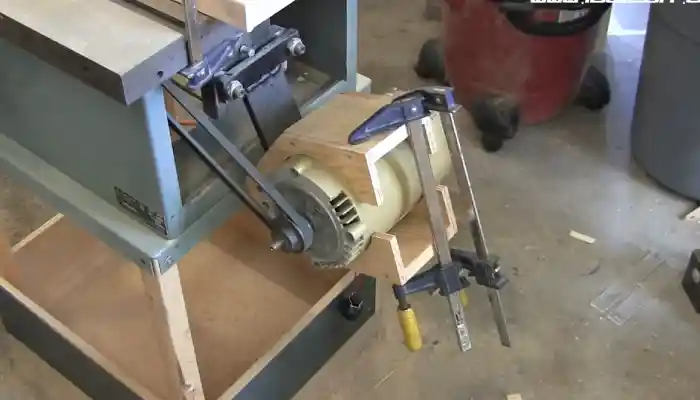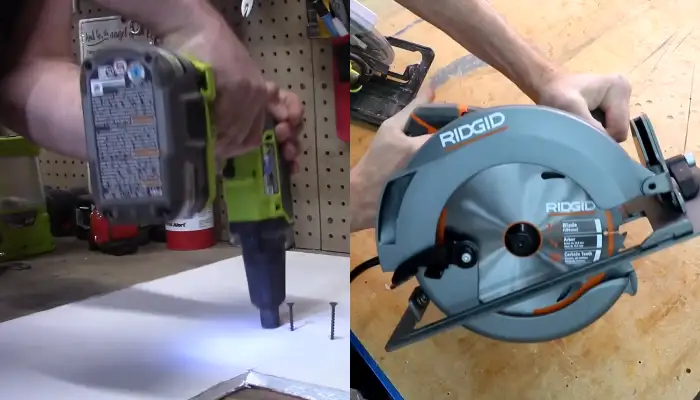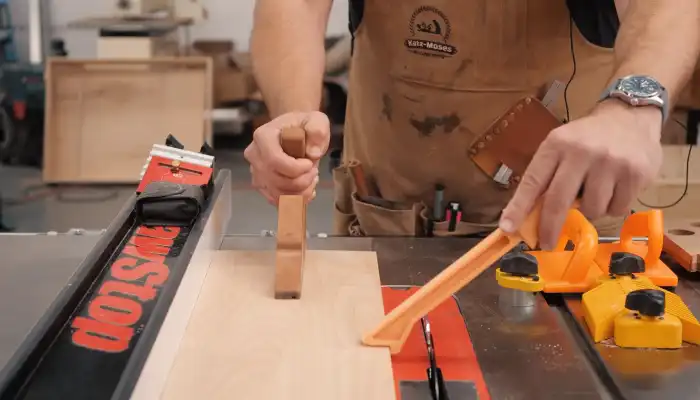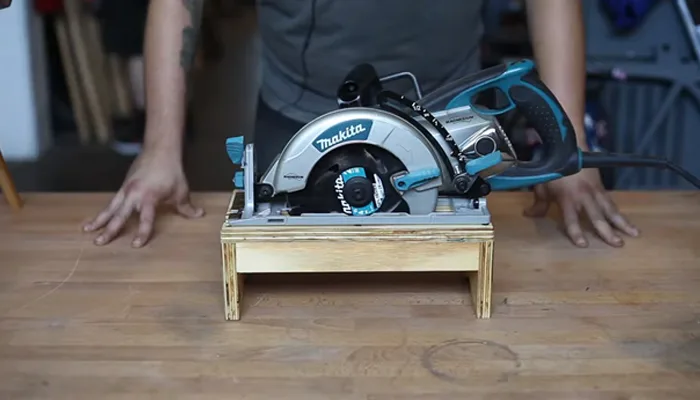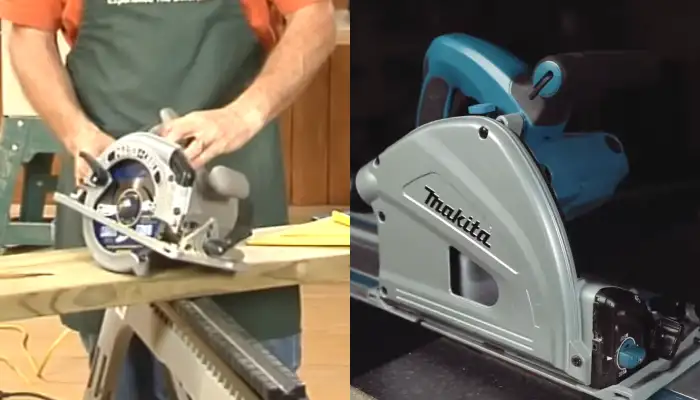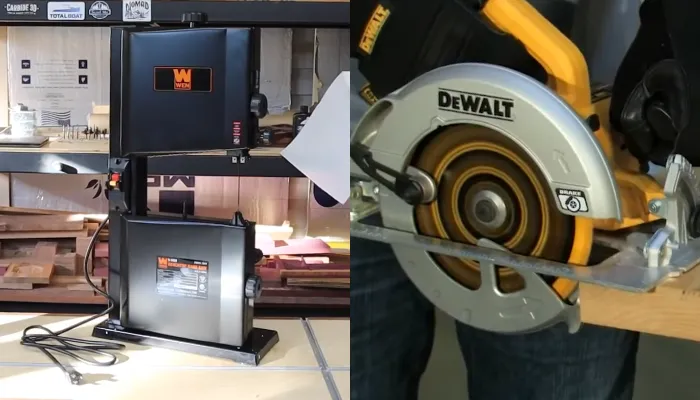Does Bandsaw Perform Better With Riser: 6 Factors Considered
As a bandsaw enthusiast, I’ve wondered if adding a riser block would enhance its performance. So, I investigated bandsaw modifications. And guess what I discovered? A riser block can indeed improve the functionality of a bandsaw.
Adding riser blocks to bandsaws brings unique advantages, shaping the woodworking experience. Using a riser block on a bandsaw can greatly enhance its resaw capacity, allowing for larger and more intricate cuts. With the ability to accommodate longer blades, bandsaws can make finer and more precise cuts.
But, as with any modification, there are a few cons to consider. Throughout this article, I’ll explain the benefits and potential issues of using a riser block on your bandsaw. Let’s find out if it’s worth the upgrade.
How Does Bandsaw Perform Better With a Riser Block?
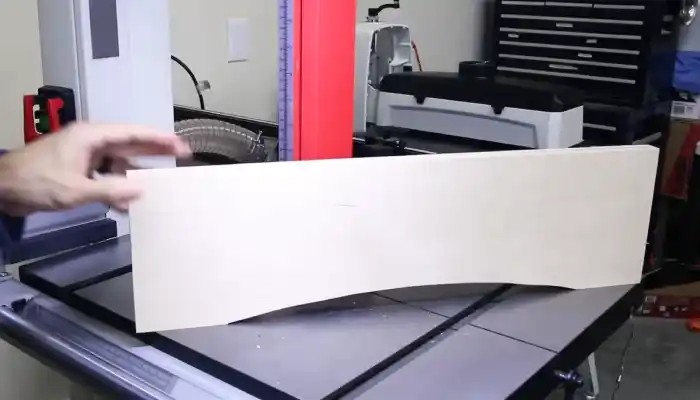
When researching bandsaw modification with a riser block, I’ve found the following six facts you need to know:
- Resaw capacity enhancement: unleashing the power
- Precision redefined: longer blades for finer cuts
- Tensioning made easy: allow straighter cuts
- Stability amplified: minimizing vibrations
- Control and safety: gentle passes, enhanced efficiency
- Blade choice harmony: options for bandsaw bliss
1. Resaw Capacity Enhancement: Unleashing the Power
Adding a riser block to a bandsaw enhances its resaw capacity, allowing you to tackle larger materials easily. This simple modification significantly increases the height of the bandsaw’s cutting capacity, unlocking new woodworking possibilities.
With a 6-inch riser block, the bandsaw’s resawing capabilities can be boosted by up to 6 inches, bringing the total resaw capacity to an impressive 12 inches. This means you can now easily slice through thicker stock, opening doors to a broader range of woodworking projects.
2. Precision Redefined: Longer Blades for Finer Cuts
Using a riser block for longer blades, you can achieve finer cuts with your bandsaw. By transitioning from a standard blade length to an extended option, such as a 105-inch blade, you can easily tackle delicate and intricate designs.
The extended reach provided by the longer blade contributes to cleaner and more accurate cuts, elevating the overall precision of the bandsaw.
This increased blade length allows for greater control and maneuverability, making finer cuts in the wood. This precision is essential for woodworking projects that require intricate details and tight tolerances.
3. Tensioning Made Easy: Allow Straighter Cuts
Transitioning to a bandsaw with a riser block enhances tensioning capabilities, resulting in straighter cuts and improved precision.
The addition of a riser block allows for the use of longer blades, which in turn enables better tension adjustment. With longer blades, the tensioning process becomes more manageable, ensuring the blade remains properly tensioned throughout the cutting process.
This improved tensioning reduces blade deflection, leading to straighter and more accurate cuts. The riser block also supports the blade, minimizing the risk of twisting or wandering during cuts.
4. Stability Amplified: Minimizing Vibrations
By incorporating a riser block, bandsaws significantly improve performance by minimizing vibrations and ensuring stability during cutting operations. This is achieved by adding extra height to the bandsaw’s frame, allowing for the use of longer blades.
Longer blades have a greater mass, which helps to dampen vibrations and reduce the chances of blade deflection. The increased stability the riser block provides is particularly beneficial when working with large boards or challenging pieces of wood.
5. Control and Safety: Gentle Passes, Enhanced Efficiency
With the addition of a riser block, I assure you that your band saws will perform better, allowing for gentler passes, enhancing efficiency, and improving control and safety.
The longer bandsaw blades with a riser block enable smoother cuts, reducing the risk of kickback and enhancing safety during operation. Gentler passes also contribute to improved efficiency in the woodworking process as they minimize the chances of blade deflection and material wastage.
Additionally, the improved safety aspects of the bandsaw with a riser block installation provide peace of mind and reduce the likelihood of accidents or injuries.
6. Blade Choice Harmony: Options for Bandsaw Bliss
When using a riser block, bandsaw performance is optimized by achieving blade choice harmony.
The diverse array of blade choices, such as Woodslicers, Olson, and Timberwolf, allows you to tailor their setups based on personal preferences and specific woodworking demands. Each blade option brings its own merits, providing users with the flexibility to achieve bandsaw bliss.
Can a Bandsaw Riser Block Cause Any Problems?
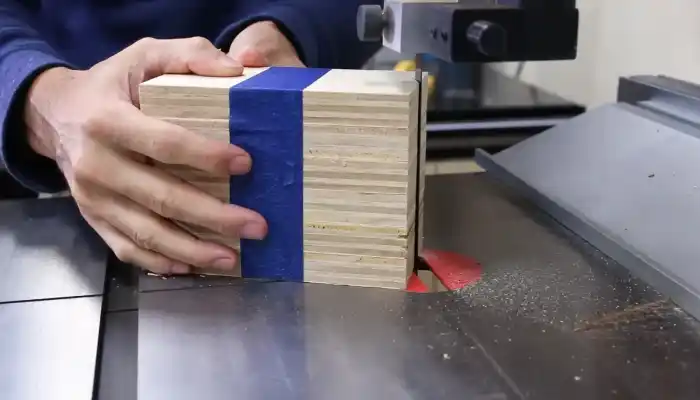
I want to address the potential problems of using a bandsaw riser block.
Blade Power
Using a riser block on a bandsaw may potentially affect blade power. When adding a riser block, the distance between the upper and lower wheels increases, resulting in a longer blade length. This longer blade requires more power to maintain tension and make accurate cuts.
Insufficient power can cause the blade to deflect or drift during operation, leading to inaccurate cuts and potential safety hazards. Ensure the bandsaw’s motor and drive system have enough power to handle the increased blade length and tension requirements.
Compatibility and Installation
Although installing a riser block on a bandsaw can enhance its capabilities, consider the compatibility and installation process to avoid potential problems.
Not all band-saws are manufactured to support riser blocks, so check the manufacturer’s guidelines and recommendations before proceeding. Improper installation can also lead to operational issues, such as misalignment or instability, negatively affecting the bandsaw’s performance and safety.
To ensure a successful installation, follow the manufacturer’s instructions carefully, including any required tools or techniques.
Cost Considerations
While adding a riser block enhances the capabilities of a bandsaw, it also comes with additional costs.
These costs include not only the purchase of the riser block itself but also longer blades and any additional accessories that may be required. You need to factor in these costs when deciding whether or not to install a riser block.
Determining if the investment is worthwhile and aligns with the desired enhancements is essential. Additionally, ensure that the bandsaw is compatible with the riser block and that there are no compatibility issues that could cause problems during installation or operation.
Can I add a riser block to any bandsaw?
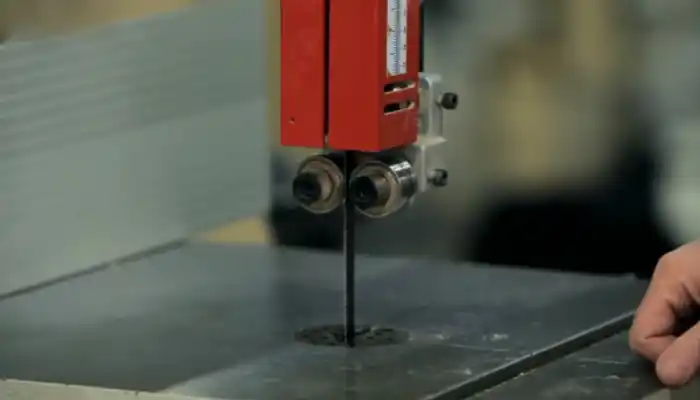
Not all bandsaws are designed to accommodate riser blocks, and attempting to install one on an incompatible model can result in damage or unsafe operation. Riser blocks are typically available as accessories for specific bandsaw models, allowing users to increase the cutting height and accommodate larger workpieces.
Manufacturers provide guidelines and recommendations for installing riser blocks, including the necessary modifications and adjustments. Follow these instructions precisely to ensure proper installation and optimal performance.
Do I need special blades for a bandsaw with a riser block?
When adding a riser block to a bandsaw, consider the type of blades needed for optimal performance. Longer blades are required to accommodate the increased height the riser block provides.
The choice of blades may vary depending on your specific needs and preferences. Some popular options include Olson, Timberwolf, and Woodslicers blades. These blades are designed to handle the added height and provide clean and precise cuts.
I recommended experimenting with different blades to find the best fit for your bandsaw with a riser block. Ultimately, using special blades designed for bandsaws with riser blocks can enhance your machine’s overall performance and capabilities.
Can a bandsaw with a riser block be used for metalworking?
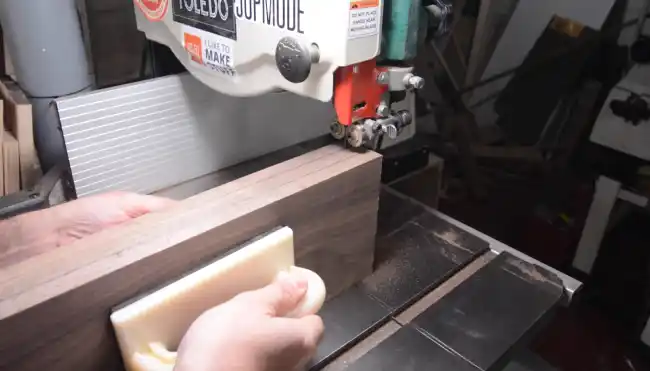
I have found that a bandsaw with a riser block can be used for metalworking, provided certain precautions are taken.
When working with metal on a bandsaw, use the appropriate blade for the specific type of metal being cut. For cutting non-ferrous metals like aluminum and brass, a blade with a high tooth count and a slower cutting speed is recommended to ensure accuracy and longevity.
Use proper lubrication to reduce friction and heat buildup during the cutting process. This helps prevent blade wear and extends the lifespan of the blade.
Do I need a push block for a bandsaw with a riser block?
For optimal control and safety, I suggest using a push block with a bandsaw with a riser block. When operating a bandsaw with a riser block, the added height increases the distance between the blade and the table, making it more difficult to maintain proper control over the stock.
A push block secures the material and allows for smooth and precise feeding through the blade. It also keeps your hands safe from the blade, reducing the risk of accidents and injuries.
Additionally, a push block helps to minimize the chance of kickback, which can occur when the blade grabs the stock and forcefully throws it back toward the operator.
Expand Your Bandsaw’s Capabilities with a Riser Block
Adding a riser block to a bandsaw will greatly increase its resawing capacity, allowing for deeper cuts and the ability to work with larger materials. Utilizing a riser block allows for longer blades on the bandsaw, resulting in improved precision, cleaner cuts, and greater control and maneuverability.
However, you should pay attention to the potential problems I mentioned earlier, such as decreased stability and the need for special blades.
Despite these considerations, a bandsaw with a riser block can still be a valuable tool for woodworking and metalworking. So, why limit yourself when you can expand your bandsaw’s capabilities with a riser block?


